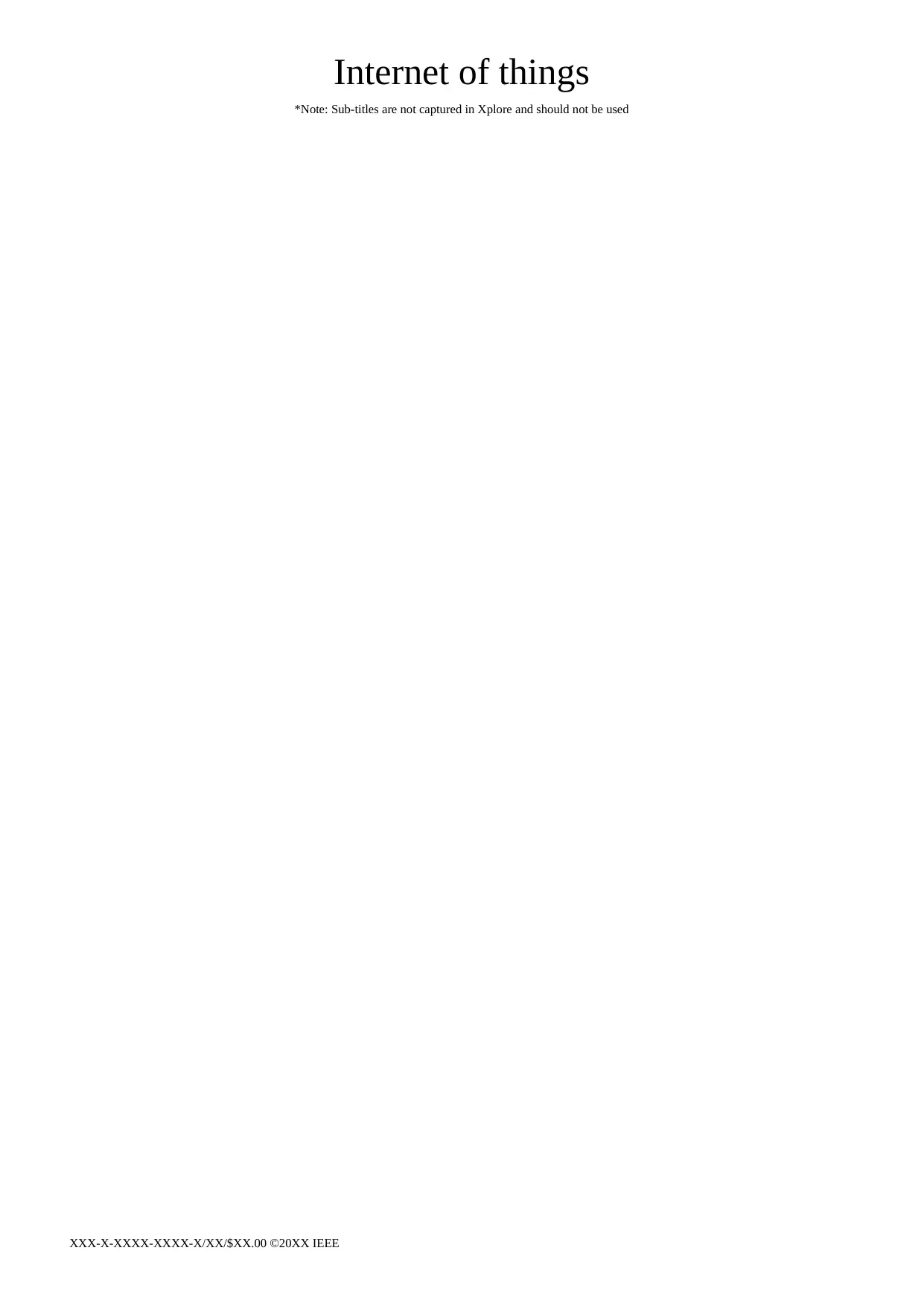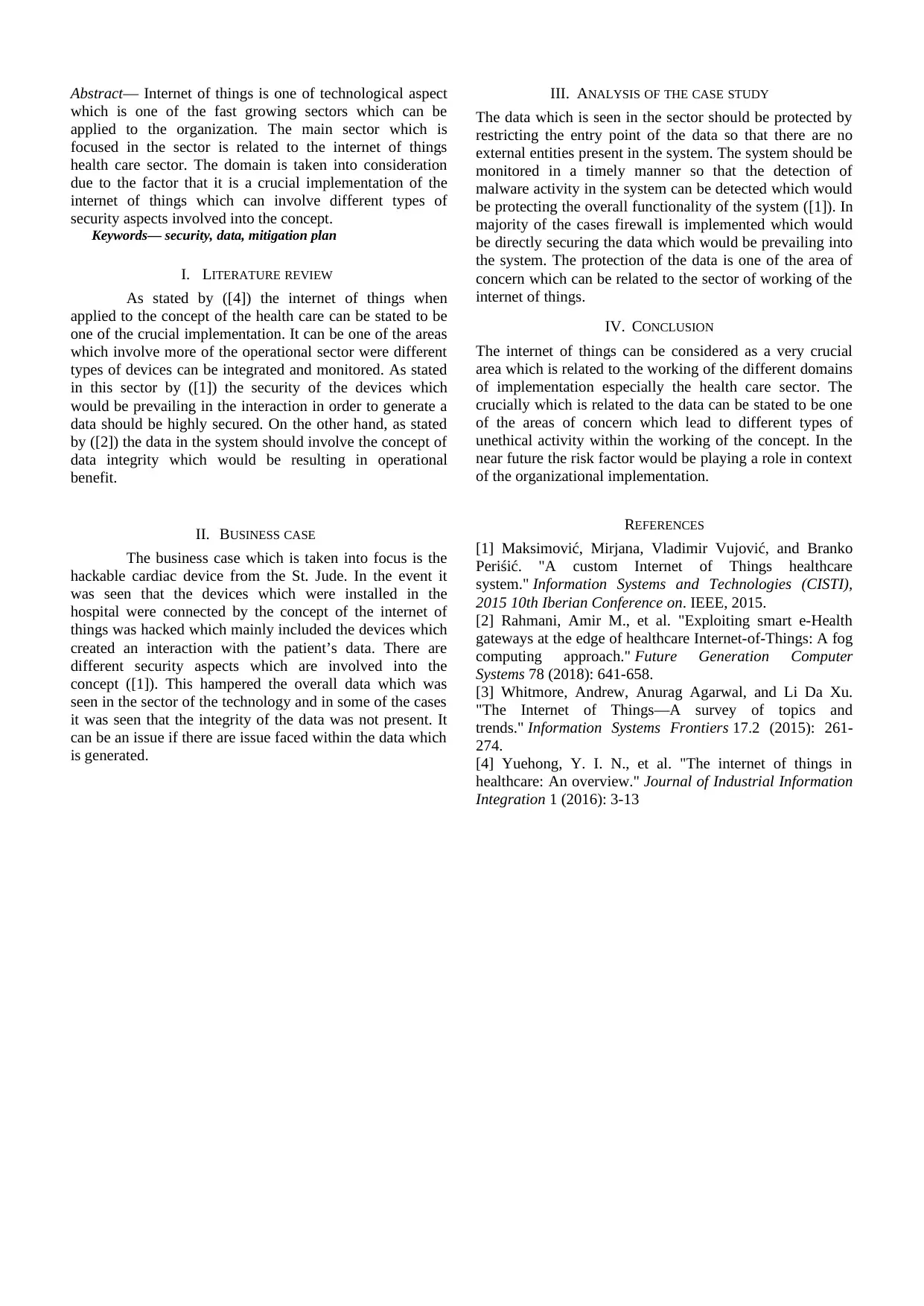NIT5140 Information Security: IoT Hackable Cardiac Device Case
VerifiedAdded on 2023/06/03
|3
|735
|203
Case Study
AI Summary
This assignment presents a case study analyzing the security vulnerabilities within Internet of Things (IoT) devices, specifically focusing on a hackable cardiac device. It begins with a literature review highlighting the importance of security in healthcare IoT implementations, emphasizing data integrity and device security. The business case centers on a St. Jude cardiac device hack, where compromised devices interacting with patient data led to security breaches and potential data integrity issues. The analysis underscores the necessity of restricting data entry points, timely system monitoring for malware detection, and firewall implementation. The conclusion emphasizes the critical role of IoT in healthcare but also the significant security risks involved, suggesting that future organizational implementations must prioritize risk mitigation. Desklib offers a wide range of resources, including past papers and solved assignments, to aid students in understanding and mastering information security concepts.
1 out of 3







![[object Object]](/_next/static/media/star-bottom.7253800d.svg)